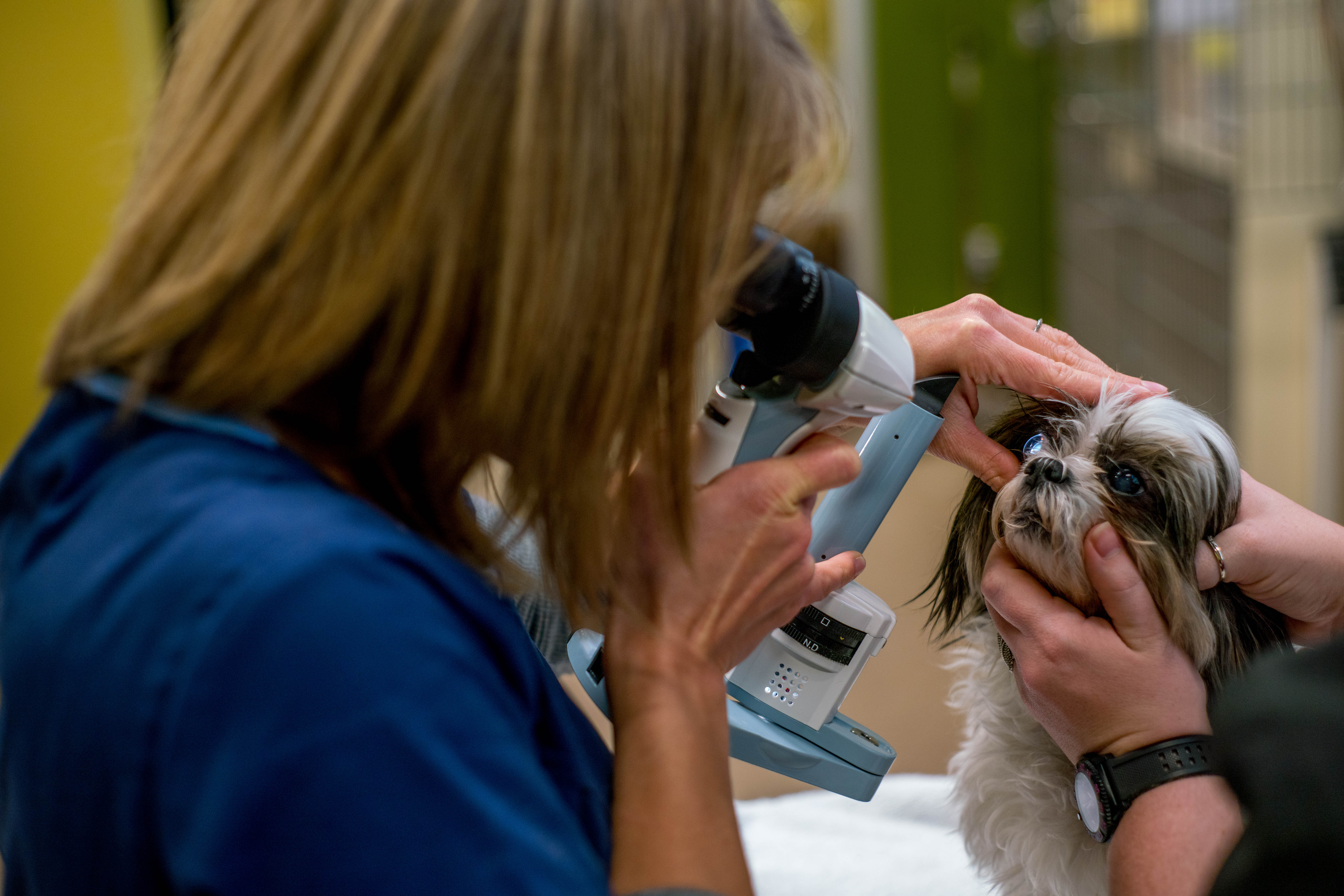
At Upstate Vet, we believe your pet’s vision and ocular comfort are important components of her overall health and quality of life. Regular exams are critical to detect ocular disease early and preserve vision and comfort. Although your primary veterinarian can treat many eye problems successfully, more difficult issues require the expertise of a board-certified veterinary ophthalmologist. Our experienced team is available to treat your beloved companion’s eye emergencies and diseases.
Since your pet leads the way with her head, her eyes are often subject to trauma. The clear outer part of the eye, or cornea, can develop scratches, abrasions, and puncture wounds when exposed to foreign material. Since vision is critical to survival, the cornea has a dense concentration of pain receptors, and corneal injuries are extremely painful. A pet whose eye is painful will show the following signs:
A corneal injury diagnosis involves staining the cornea with fluorescein dye that detects surface injury. Treatment ranges from eye drops to surgical procedures, depending on the damage.
A number of ocular problems can cause rising pressure within the eye, resulting in glaucoma. Increased intraocular pressure is always an emergency, as pressure on the nerves lining the back of the eyeball, called the retina, can quickly cause blindness. Warning signs of glaucoma include:
Intraocular pressure can be measured by numbing the cornea with a few drops of medication, and using an instrument called a tonometer to gently touch the surface. If pressure is elevated, further testing is performed to determine the cause and a treatment plan. Glaucoma treatment is lifelong, and blindness can still occur.
A cataract is a lens opacity caused by genetics, diabetes, aging, or a congenital abnormality. A cataract appears as cloudiness of the pupil, which is the black area in the center of the iris, and an exam will determine whether the cloudy eye is caused by a cataract or normal aging. Cataracts vary in severity, but those that interfere with vision require surgery. Before surgery, testing is performed to confirm the rest of the eye is functional and to ensure the patient is a good anesthesia candidate. During surgery, the capsule surrounding the lens is incised, the lens contents are removed, and a prosthetic lens is placed. The procedure restores vision immediately, and has a high success rate and low likelihood of complications.
Entropion and ectropion are conditions of abnormal eyelid length. Animals with entropion have a short eyelid that can curl inward onto the cornea. The eyelashes rub against the corneal surface, causing trauma and infections. Entropion can be acquired, but is often inherited in breeds, such as the chow chow, shar-pei, bullmastiff, Rottweiler, Great Dane, and Saint Bernard.
Pets with ectropion have a longer-than-normal eyelid that can droop away from the eye surface. Tears do not spread over the cornea and can drain away and cause dry, red eyes. Ectropion is genetic and commonly inherited in breeds, such as the Saint Bernard, Great Dane, bloodhound, bullmastiff, and Newfoundland.
Entropion and ectropion often require surgery to reconstruct the eyelid so it has appropriate contact with the corneal surface.
Is your pet showing signs of a possible eye problem? Talk to your family veterinarian, and contact our office if your veterinarian recommends that you see a veterinary ophthalmologist.